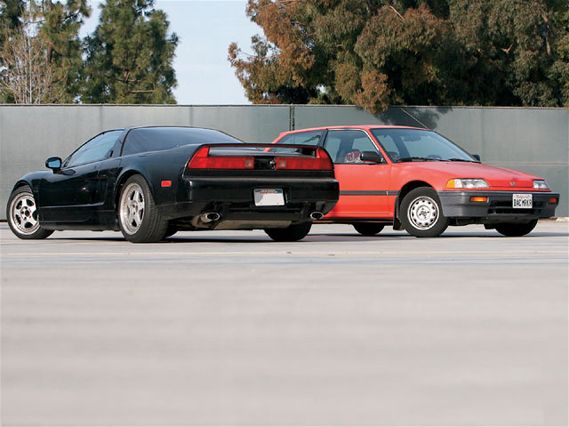 | Project Civic Vs. Project Nsx - Tech
| Project Civic Vs. Project Nsx - Tech
The reasoning behind this duel was simple: I wanted more Hondas in the fleet. Since Project EG was finished a long time ago and Project S2000 came and went all too quickly, I've been looking for a little more variety. Sourcing the cars was simple, Andy Hope loves his newly purchased 1988 Civic and Jay Chen just took advantage of the used car market by picking up a now-affordable first-gen Acura NSX. A lot has changed in the aftermarket since these cars first debuted and many innovative products have since been released in support. So it made perfect sense to introduce two new Hondas to the project car fleet.
Beyond the tech analysis and build-up, though, how could we make these two truly interesting, something that would really raise the stakes? There was an obvious answer: a death match had to take place. Each project would be left in the care of its owner and they would go head-to-head to see who could develop the more reliable, faster, cheaper, powerful, better-looking, and easier-to-live-with project car. To add a little more spice, Hope and Chen will also battle to see who would be the first to clinch a randomly selected lap time at Buttonwillow Raceway. Nothing wrong with ambitious projects, right? Let the games begin. -JL
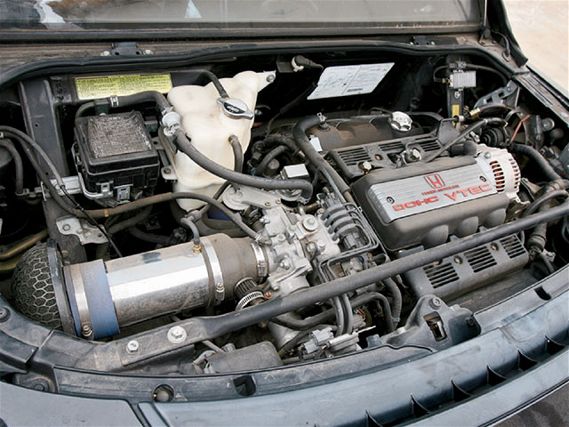 | Project Civic Vs. Project Nsx - Tech
| Project Civic Vs. Project Nsx - Tech
Project NSX
Just as I was wrapping up the paperwork and about to start licking the financial wounds from purchasing an NSX, Editor Leh hatched the hair-brained idea of having a project car face-off between Hope's daily driver, a 1988 Civic Something (who cares what model it is?) and my NSX. At the end of our so-called simultaneous build-up, we'd have a shootout at Buttonwillow Raceway. Naturally, this is a contest of speed geared for the underdog Civic in terms of money, feasibility and practicality.
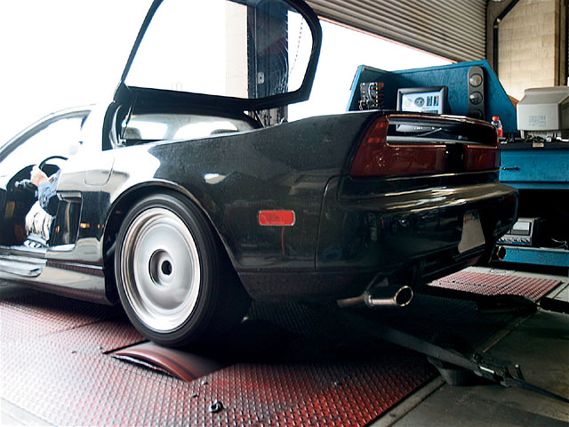 | Project Civic Vs. Project Nsx - Tech
| Project Civic Vs. Project Nsx - Tech
At the outset, I thought I'd be getting the spanking of a lifetime from a Civic. Outside of the obvious difference in sex appeal and power, old stripped-down Civics can be very fast with the right parts. A Civic can easily get under the 2000-pound weight mark, while a NSX Type-R struggles to reach 2700 pounds. And any idiot with a few bucks can make a base-model Civic faster than an NSX. NSXs are more like Ferraris, where a couple thousand dollars spent on an exhaust will only make 3hp over the already well-designed and non-mass-produced factory part.
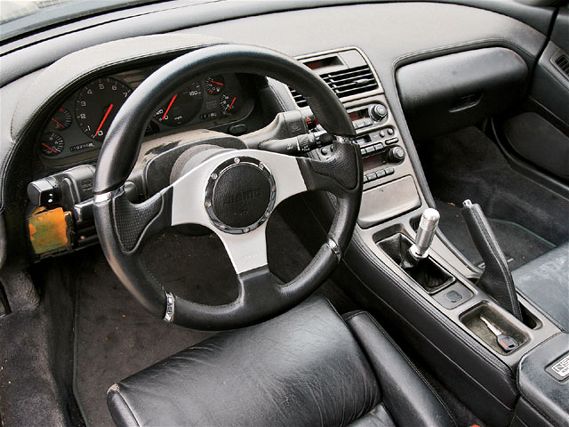 | Project Civic Vs. Project Nsx - Tech
| Project Civic Vs. Project Nsx - Tech
This particular beat-up example of a 1991 NSX (which is all I could afford), still costs twice more than the Civic cost new 16 years after the fact, even with inflation factored in. A new set of NSX windshield wipers (which can't be found in a junkyard) will cost more than a complete set of replacement Civic body panels. Add in Hope's grassroots racing past and pimp-look fanaticism, and Project Civic will probably end up as a caged and gutted racecar with a stereo and some JDM nostalgia parts. Hope has the winning equation and I couldn't care less.
That is, until we started our little contest by measuring some baseline numbers. We decided to compare the cars as they sat after purchase. The problem was, both were in such sad shape, going to the track to get performance numbers would be pointless and almost dangerous.
Instead, we measured what we could without risking lives and cars. I proposed the logical tests: scales, to get the starting weight of each car with a full tank of gas, and dyno. The Civic was significantly lighter, but the NSX still weighed under 3000 pounds-about the weight of a modern, entry-level commuter car. The almost 800-pound difference was offset by the laughable power difference shown by the dyno. The look on Hope's face was priceless as his car made a first pull to the tune of 82 wheel-hp, right after the NSX's 255 wheel-hp. Suddenly, the on-track odds didn't look so bad.
Hope, digging into his car show past and desperately trying to score any points possible, wanted to include pimp factor as a part of evaluation (rather ironic, considering the cars in question). So we invited show guru RJ de Vera to judge. My strategy was simple: let the two-year-thick layer of dust and parking structure grime hide the bad paint and precarious parts. The knock-off Mugen oil and radiator caps might give the NSX an advantage over the Civic's Hawaii-themed Wal-Mart seat covers, as long as no one notices the missing wipers or non-functional air conditioning and stereo. At least the NSX comes with a tachometer.
The last part of our face-off is to determine target lap times at Buttonwillow Raceway. Considering only serious time attack cars break the two-minute barrier, we decided that the two-minute ballpark would be a good start. But we couldn't agree on an exact figure (since I have no idea what kind of times an NSX will run on that track), so we ultimately settled on rolling a die for it.
We pulled out the Dungeon Master hats and found a die with 0, 2, 4, 6, 8 and 10 at a local gaming store. Whatever we rolled, we'd add on to two minutes for our target lap times. Luck wasn't on Hope's side. Even though he rolled a six, which is a reasonable time for a fast Civic, I prayed for a 10. And I got what I wanted. So two minutes, 10 seconds it is. Honestly, I think the NSX with a set of tires would already be close. Regardless of the outcome, I'll be driving home in an NSX, while Hope will be in a fast Civic at best.
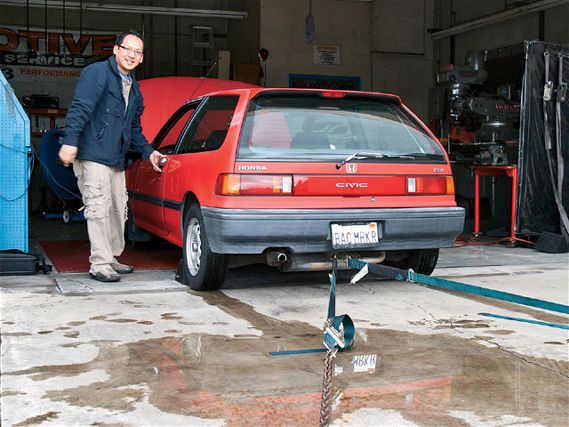 | Project Civic Vs. Project Nsx - Tech
| Project Civic Vs. Project Nsx - Tech
Project Backmarker Civic
For each of us, there's one car that got us hooked. For me, it was the fourth-gen Civic hatchback. They've been referred to as old-school in recent years. The cool kids might call them EF9s. The cooler kids would call this one an ED6. But I got hooked before I knew the chassis code, before I knew what a double wishbone suspension was, and long before I ever thought I'd build one to beat an NSX. I just thought the little Civics looked sharp.
From a tuning perspective, any Civic from model year 1988 to 2000 has the most potential. They all come with a double wishbone suspension up front, are reasonably lightweight, and have a good amount of parts interchangeability, aftermarket support, blah, blah, blah... you guys already know this stuff. The pre-88s had an awkward suspension design and the post-2000 models had an awkward suspension design and extra weight to boot. When picking a Civic for a project car, it comes down to personal preference within those golden years and what can be found that's still in decent shape.
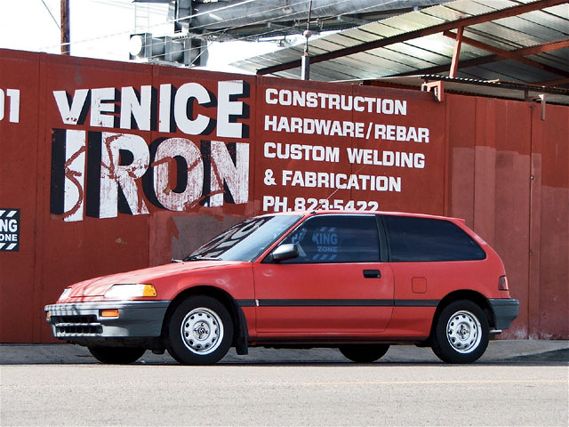 | Project Civic Vs. Project Nsx - Tech
| Project Civic Vs. Project Nsx - Tech
My original plan was get a black '90 or '91 Si, as that specific version is my all-time favorite Honda. But this '88 DX was too good to pass up. A close friend was the original owner and needed to make room for his Zanardi NSX. He was meticulous with maintenance and not as concerned with the selling price as he was with making sure it went to a good home.
With that, I proudly introduce Project Backmarker Civic. It was the top-of-the-line model in '88, as the Si was skipped that year. Its five-speed transmission, big 91hp cam and rear wiper differentiate it from the base model Civic STD (yeah, it was a good move when that name was changed to CX a few years later). This DX came with the optional passenger-side door mirror and air conditioning. Unfortunately, it didn't come with the optional rear mud flaps and interior clock. A tachometer was not an option. Other than some unsightly holes in the door panels from an old stereo install, the car is bone stock and in amazingly great shape for a 20-year-old vehicle that retailed for $8300 new.
I've done a few minor upgrades to the areas that needed attention. The clutch was starting to slip. While the tranny was off, I had the flywheel machined down and replaced the final drive with one from a '91 Si. The revs sound a little high on the freeway now, but she still gets 35mpg in LA traffic.
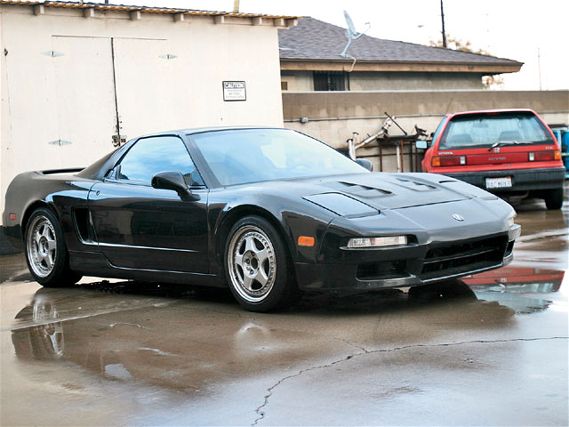 | Project Civic Vs. Project Nsx - Tech
| Project Civic Vs. Project Nsx - Tech
The CD player had given up. It was replaced with a Pioneer unit that also controls my iPod. It sends plenty of power to the two remaining door speakers, while a powered 10-inch Bazooka tube provides a vintage boom, but also comes out easily for the track days that are coming up. And speaking of track days, I couldn't get my knee under the stock steering wheel, making it impossible to heel-and-toe. A small-diameter Sparco wheel and spacer fixed that. The final interior touches were some carbon fiber wing endplates trimmed down and bolted to the door panels to fill the old holes. And some $10 Hawaiian-patterned seat covers keep the torn seats from leaving foam everywhere.
The goal is to build a classic street Civic that can hold its own on the track. I intend to put a disproportionate amount of time and money into aesthetics. People laugh when I say EFs are better-looking than the later EG and EK-chassis Civics. I want to show people what they were like back when they were still new. This will also help sucker engineering editors into thinking it's a show car. The suspension will be close to an all-out racing set-up. The gem of this era of Civics is its suspension and I want to show off what it can do.
With a target lap time of 2:06, things shouldn't need to get too crazy under the hood. Bolting big power onto old Hondas is too easy anyway. I'll bet more Civics are laying down 300-plus wheel-hp than NSXs right now (ooh, undocumented stats and a dig on NSXs-that'll piss off Chen twice). Project Backmarker Civic needs to stay smog legal, since it will be driven on the street, and having it impounded and crushed would suck ass.
It should be able to hit the target time using a single-cam motor, but if it has to get an engine swap, this Civic's gonna blow Chen's chunk of polished aluminum right off the track.
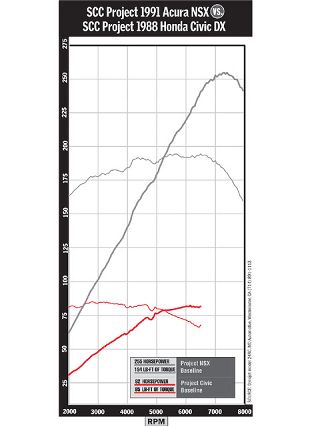 | Project Civic Vs. Project Nsx - Tech
Project {{{NSX}}} Project Civic Difference Year 1991 1988 3 years Purchase price $20,000 $500 $19,500 Weight 2920lb 2160lb {{{760}}} lb Peak wheel-hp 255 82 173 Peak torque (lb-ft) 194 85 109 Car show score 6/{{{100}}} 6/100 0 Die-roll target lap time 2:10 2:06 4 seconds
| Project Civic Vs. Project Nsx - Tech
Project {{{NSX}}} Project Civic Difference Year 1991 1988 3 years Purchase price $20,000 $500 $19,500 Weight 2920lb 2160lb {{{760}}} lb Peak wheel-hp 255 82 173 Peak torque (lb-ft) 194 85 109 Car show score 6/{{{100}}} 6/100 0 Die-roll target lap time 2:10 2:06 4 seconds
Show Car Weigh-In
Exterior
Both have horrible exteriors. The paint on each car is fading and oxidized, with the NSX having the worst of it. Also, the ultra-discolored carbon hood on the NSX looks like ass and should be shipped to the junkyard. The Acura's missing windshield wipers, rear reflector emblem, fading windshield and numerous bird droppings mark it down.Advantage: Civic
Interior
The NSX's interior is torn and the labels are peeling off. There's no dash cover panel under the steering column and, even with the Momo steering wheel and Mugen shift knob. The Civic's interior is in great condition for its age, with no sign of serious abuse. It sports a Sparco steering wheel, an old-school stereo system with a Bazooka tube, carbon fiber interior pieces, Acura mats and a GSR shift knob, which, along with Hawaiian-themed seat covers, give it the nod.Advantage: Civic
Engine/Performance
The NSX comes out fighting with an HKS Power Flow air intake, along with a Mugen oil cap and coolant tank cover. The Civic is super-stock. By a slight margin, the NSX takes the honors when considering its other performance goodies.Advantage: NSX
Wheels/Tires/Suspension
The Civic rolls on 13-inch stocker wheels. They're real puny yet, again, in decent condition. The NSX has beat-up, aftermarket three-piece wheels with higher-performance tires. Along with its TEIN RA suspension, this NSX aspires to be more.Advantage: NSX
Final Verdict: dead crappy even
